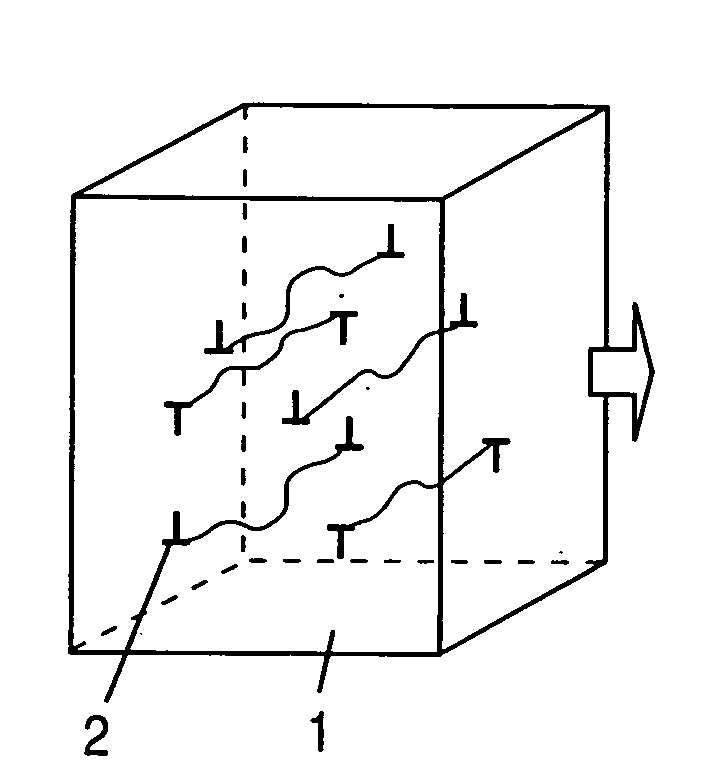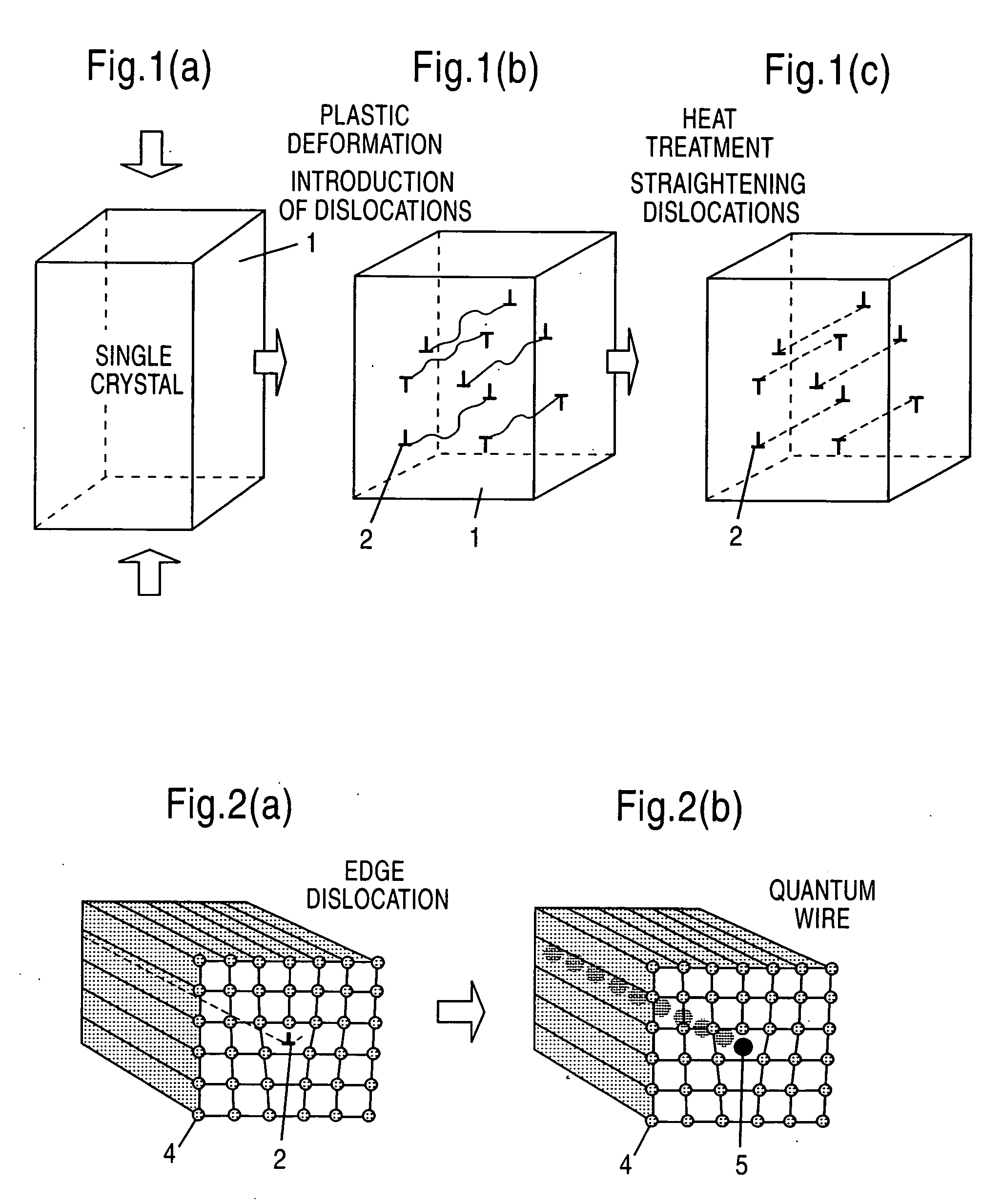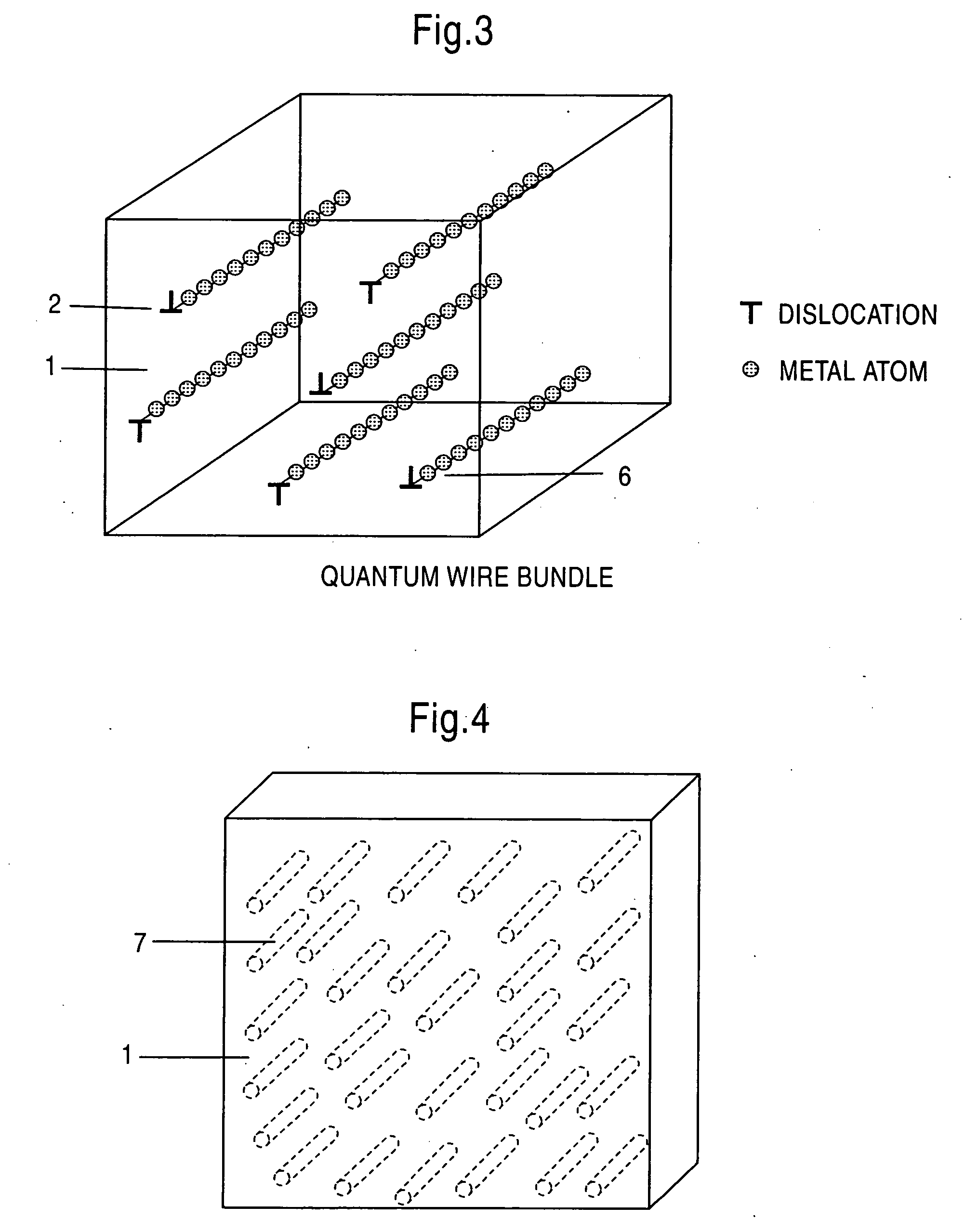Single crystal material having high density dislocations arranged one-dimensionally in straight line form, functional device using said single crystal material, and method for their preparation
a single crystal material and high density technology, applied in the field of ceramic or metal single crystal material having high density dislocations arranged one-dimensionally on respective straight lines, a functional device, can solve the problem of limited utilization of the dislocation mechanism
- Summary
- Abstract
- Description
- Claims
- Application Information
AI Technical Summary
Benefits of technology
Problems solved by technology
Method used
Image
Examples
example
(Example 1)
[0040] As schematically shown in FIG. 5(a), a cubic zirconia single-crystal sample of 5 mm (length)×5 mm (width)×10 mm (height) was compressed using an electrohydraulic compression machine under the conditions that a crosshead speed is a constant value of 0.005 mm / min, an angle between the normal line relative to the principal slip plane (001) face and the compression axis being 55 degree, an atmosphere being normal atmosphere and a temperature being 1300° C., to induce a plastic deformation of 1% (strainε=8.3×106). A principal slip direction was [110], and a compression direction was [112]. Then, the sample was subjected to a heat treatment at 1300° C. for 1.5 hours. Edge dislocations introduced by the heat treatment after the compression are schematically shown in FIG. 5(b).
[0041] The zirconia single crystal having high-density dislocations introduced therein was polished. Then, the single crystal was subjected to an ion thinning process to have a reduced thickness, a...
example 2
(Example 2)
[0044] Under the same conditions as those of Example 1, except for using alumina single crystal (sapphire) as a single crystal sample, dislocations were formed in the sample, and titanium was deposited on the sample through a vacuum deposition process. Then, the deposited titanium was diffused at a temperature of 1400° C. and a pressure of 1 atom or less under an Ar gas atmosphere for 2 hours. FIG. 7(a) is an energy dispersive spectroscopic (EDS) image of the sample after the titanium deposition at a position just above a basal dislocation (circled zone B) and at a position away from the basal dislocation by 20 nm (circled zone A). FIG. 7(b) is an EDS spectrum obtained at a position of the circled zone A, and FIG. 7(c) is an EDS spectrum at a position just above one of the dislocations. The measurement was conducted using a probe with a diameter of 1 nm. As seen in FIG. 7(c), 3 to 5 at % of titanium exists at the position of the dislocation. This means that titanium atoms...
PUM
 Login to View More
Login to View More Abstract
Description
Claims
Application Information
 Login to View More
Login to View More - R&D
- Intellectual Property
- Life Sciences
- Materials
- Tech Scout
- Unparalleled Data Quality
- Higher Quality Content
- 60% Fewer Hallucinations
Browse by: Latest US Patents, China's latest patents, Technical Efficacy Thesaurus, Application Domain, Technology Topic, Popular Technical Reports.
© 2025 PatSnap. All rights reserved.Legal|Privacy policy|Modern Slavery Act Transparency Statement|Sitemap|About US| Contact US: help@patsnap.com



